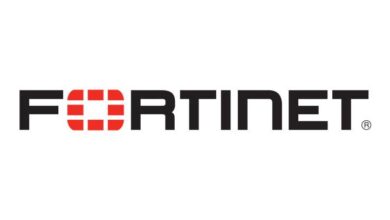Beating regional banking challenges with generative AI

The challenges faced by U.S. regional banks, which came to a head with the collapse of three institutions in 2023 and one recently in 2024, are far from over. Significant tightening of capital norms, coming on top of last year’s deposit flight, is creating a liquidity crunch.
To attract fresh deposits, banks must pay more because of the hike in interest rates, but they continue to earn lower interest on their loans which are mostly tied up in long tenures thanks to their huge exposure to commercial real estate. And this itself is another cause for concern: with $2.2 trillion worth of commercial real estate (CRE) loan repayments being due over the next three years, any default or delay will hit the banks hard. What’s more, with funding, compliance, and other operational costs going up, banks continue to see a dip in margins: market analysts expect that eleven regional banks with assets between $50 billion and $100 billion will see their earnings per share dip this year compared to last, while four will also suffer a decrease in net interest income.
Artificial intelligence (AI) technologies, such as generative AI (gen AI), can not only help U.S. regional banks overcome these challenges, but also reap the benefits of higher growth and efficiency.
Mitigate persistent liquidity constraints
Soon after the collapse of Silicon Valley Bank in March 2023, one group of analysts estimated that together, the most vulnerable banks – which, while not identified, would mainly include small and mid-sized banks – had lost deposits worth $1 trillion since the previous year, about US $500 billion in that month alone. With customers moving their money out in preference of higher-yielding investments or to simply spend it away, and new deposits coming at high cost, regional banks need to stretch every dollar of liquidity a little bit further.
One way to do that is by using gen AI to optimize liquidity and cash flow. With its formidable analytics capabilities, gen AI can predict cash flows, market risks, and other relevant events in near real-time to enable banks to make better liquidity decisions. Gen AI tools can also help banks in stress testing and other types of scenario analysis, so they can evaluate the impact of various triggers on their cash and liquidity resources.
Meet regulatory expectations
Once a regional bank exceeds US $100 billion in assets, they are subject to (higher) risk-based capital standards and other mandates. In a 2021 survey, more than 31% of community bank CEOs said they expected to spend at least 5% more on compliance that year compared to 2020, and about 16% said regulatory compliance was among their bank’s biggest challenges. Significantly, 34% of banks outsourced compliance activities for reasons including the need for “extra assurance,” cost (saving), and lack of in-house compliance skills.
Today, these banks can leverage gen AI to overcome many of these issues; for example, they can query it (using natural language) on various regulations or ask it to compare different rules and policies. Gen AI can assist banks in ingesting compliance requirements and internal controls, alerting them to any gaps in the latter by mapping controls to specific regulatory obligations. In a pilot program, the technology delivered 75% faster assessments of the impact of regulatory changes, and a 40% reduction in the hours spent in compliance and legal-advisory activities. Recently, Citigroup used generative AI tools to read more than 1,000 pages on the new U.S. capital rules.
By automating routine, repetitive tasks (data entry, reconciliation, reporting, and so on) across the gamut of operations – from customer service to credit risk management to fraud detection to regulatory compliance – using gen AI, regional banks can improve productivity, efficiency and speed, reduce errors, and lower costs. SouthState Bank, a regional bank based in Winter Haven, Florida, is one example here, for having deployed a large language model-based application that employees can use to draft emails, create summaries of meetings, and ask queries.
Pursue BaaS partnerships with confidence
Regional banks are seizing the opportunity to forge synergistic banking-as-a-service (BaaS) partnerships with fintech firms. In a win-win arrangement, the bank gains new revenue streams, access to more customers, and innovation capabilities, while the fintech can leverage the bank’s license, regulatory expertise, and product range to offer innovative financial products without spending on a banking license or core systems.
The challenge, however, is that BaaS partnerships are subject to different regulations and scrutiny than banks, which means the latter need to provide for additional expertise and supervision. Complying with these rules is a serious concern, brought home by the fact that in 2023, banks in BaaS partnerships with fintechs were the target of severe enforcement actions by federal regulators in 13.5% of cases.
Already burdened with substantial regulatory costs, the last thing regional banks want is to hire additional manpower. Instead, they can train a gen AI (reinforcement learning) algorithm on regulatory information to automate both monitoring of the regulatory landscape as well as compliance activities to mitigate non-compliance risk.
Ajay Bhandari is SVP, U.S. Banks & Mortgages Sub-Vertical Head, at Infosys.



